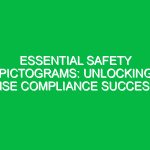Introduction
In the realm of Health, Safety, and Environment (HSE), the significance of Safety Personal Protective Equipment (PPE) cannot be overstated. Safety PPE encompasses a wide range of gear designed to protect individuals from various workplace Hazards, ensuring their health and Safety while performing tasks. The use of appropriate Personal Protective Equipment is not just a regulatory requirement; it is essential for fostering a culture of safety that minimizes risks and enhances productivity.
Each year, countless workplace injuries and fatalities occur due to inadequate protection, underlining the critical need for proper safety PPE. This article explores the vital role of safety personal protective equipment in HSE, delving into its types, benefits, regulations, and Best Practices to ensure safety success in any environment.
Understanding Safety Personal Protective Equipment
Safety personal protective equipment refers to specialized gear designed to safeguard individuals from physical, chemical, biological, and ergonomic Hazards. This equipment acts as the last line of defense when engineering controls and administrative measures fail to eliminate risks. The primary categories of safety PPE include:
- Head Protection: Helmets and hard hats protect against falling objects and bumps.
- Eye and Face Protection: Safety glasses, goggles, and face shields guard against debris and chemical splashes.
- Hearing Protection: Earplugs and earmuffs reduce exposure to high noise levels.
- Respiratory Protection: Masks and respirators filter harmful airborne contaminants.
- Hand Protection: Gloves protect against cuts, abrasions, and chemical exposure.
- Foot Protection: Safety boots and shoes prevent injuries from heavy objects and slips.
- Body Protection: Coveralls and vests shield against various hazards, including chemicals and heat.
Each type of PPE serves a unique purpose, and the selection of appropriate equipment is crucial to effectively mitigate specific risks.
Key Aspects of Safety Personal Protective Equipment
Risk Assessment
Before selecting safety PPE, a thorough risk assessment is essential. This process involves identifying potential hazards associated with specific tasks and determining the level of risk involved. Employers should engage workers in this assessment, as they often have firsthand knowledge of the hazards they face. For instance, in construction, workers may encounter fall risks, Electrical Hazards, or exposure to harmful substances, making it vital to equip them with the right protective gear.
Proper Fit and Comfort
The effectiveness of safety personal protective equipment heavily relies on its proper fit and comfort. Ill-fitting gear can lead to decreased protection and increased chances of accidents. For example, a loose hard hat may not provide adequate coverage, while tight gloves could impair dexterity. Encouraging employees to try on various sizes and styles can lead to better compliance and overall safety.
Regular Maintenance and Inspection
Maintaining and inspecting safety PPE is integral to ensuring its effectiveness. Equipment can degrade over time due to wear and tear, exposure to harsh conditions, or improper storage. Regular checks help identify any damage or wear, prompting timely replacement or repair. For example, a worker in a chemical plant should routinely inspect their gloves for tears or chemical degradation to avoid exposure during handling.
Benefits of Safety Personal Protective Equipment
The adoption of safety PPE yields numerous Benefits, both for employees and organizations. These include:
- Injury Prevention: PPE significantly reduces the likelihood of injuries, illnesses, and fatalities in hazardous environments.
- Legal Compliance: Proper use of safety PPE ensures adherence to local and international Regulations, thereby avoiding legal penalties.
- Enhanced Productivity: Workers who feel safe are often more productive, leading to improved outcomes and higher morale.
- Cost Savings: By preventing injuries, organizations can reduce costs associated with medical claims, training replacements, and potential lawsuits.
A case study from a manufacturing plant shows that after implementing a comprehensive PPE program, the facility noted a 40% reduction in workplace injuries. This not only improved employee morale but also resulted in significant cost savings for the company.
Potential Hazards and Safety Considerations
While safety personal protective equipment plays a critical role in protecting workers, it is essential to acknowledge that it is not infallible. Some potential hazards include:
- Incorrect Usage: Failure to wear PPE correctly can render it ineffective. For example, workers may neglect to secure their helmets properly or fail to use goggles when required.
- Inadequate Training: Without proper training on when and how to use PPE, employees may not be equipped to protect themselves effectively.
- Psychological Factors: Some workers may feel invulnerable when wearing PPE, potentially leading to riskier behavior.
To mitigate these hazards, organizations must provide comprehensive training on the proper use of PPE and foster a safety culture that emphasizes accountability and vigilance.
Best Practices for Implementation
To ensure the successful implementation of safety personal protective equipment, consider the following Best Practices:
- Conduct Training Programs: Regular training sessions educate employees about the importance of PPE, proper usage, and maintenance.
- Involve Employees: Engage employees in the PPE selection process to ensure their needs and preferences are considered.
- Establish Clear Policies: Develop and communicate clear policies regarding PPE usage, including when and where it is required.
- Regular Audits: Conduct periodic audits to evaluate the effectiveness of the PPE program and identify areas for improvement.
Real-life experiences from various industries illustrate the effectiveness of these best practices. For instance, a construction firm that introduced a “safety champion” program—where selected employees advocate for safety practices—saw a notable increase in PPE compliance and a subsequent drop in accidents.
Regulations and Standards Governing Safety Personal Protective Equipment
Numerous regulations govern the use of safety personal protective equipment across different industries. For instance, the Occupational Safety and Health Administration (OSHA) provides guidelines that outline the responsibilities of employers in ensuring worker safety. The Personal Protective Equipment Standards (29 CFR 1910 Subpart I) detail specific requirements for various Types of PPE.
Employers must also comply with the American National Standards Institute (ANSI) standards, which provide criteria for the performance and testing of PPE. Adhering to these regulations not only ensures compliance but also fosters a safer work environment.
Conclusion
In conclusion, safety personal protective equipment is a fundamental component of any effective HSE strategy. By understanding the various types of PPE, conducting thorough risk assessments, and adhering to regulations, organizations can significantly reduce workplace hazards. The benefits of proper PPE usage extend beyond legal compliance; they contribute to a culture of safety that enhances employee well-being and productivity.
As workplaces continue to evolve, so too must our approach to safety personal protective equipment. Organizations should continually assess their PPE programs, keeping abreast of emerging technologies and materials that may improve safety outcomes. Remember, the ultimate goal is to protect the most valuable asset of any organization—its people. Embracing safety PPE not only promotes health, safety, and environmental Sustainability but also sets the foundation for a successful and thriving workplace.


